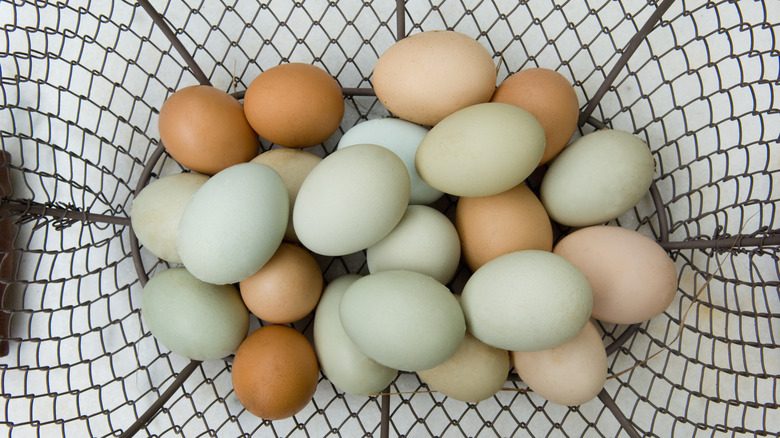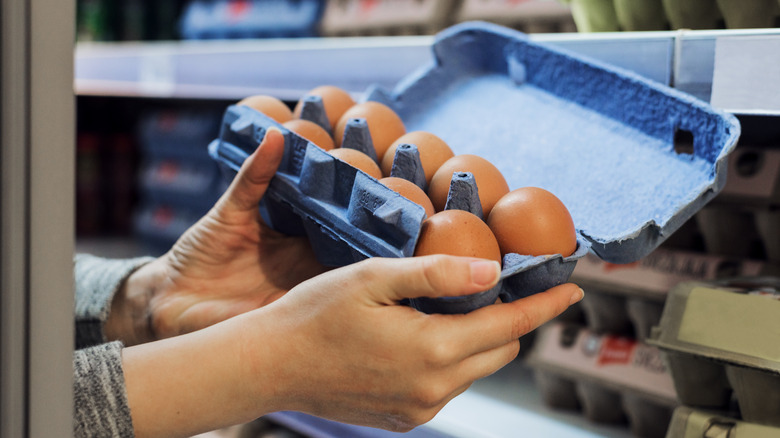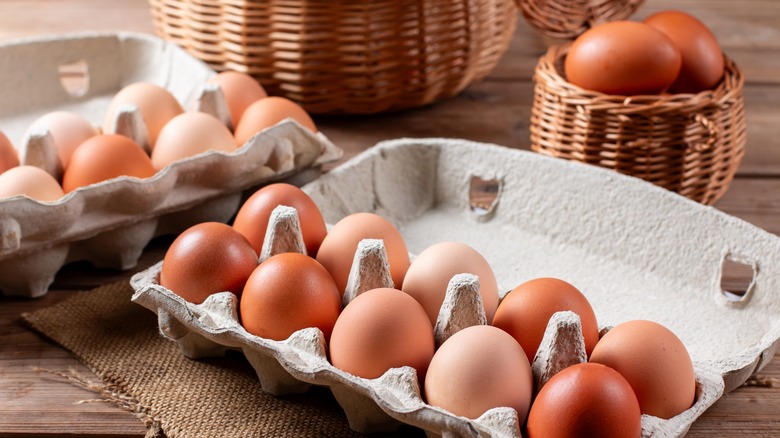The Simple Way To Check If Your Eggs Are Old
So you have a carton of eggs in the fridge nearing the sell-by date. You can't quite remember when you picked them up from the grocery store, and you're wondering if they're still fresh enough to use for your simple omelet or fluffy scramble, or even that batch of cookies. Fear not, there is a simple trick to see if your eggs have passed their prime — and all you'll need is a glass, some water, and, of course, an egg.
Known as the float-test, or the egg-float test, this method has been used for centuries — since the Middle Ages, in fact. Over the centuries, the egg-float trick has circulated, and ebbed in and out of popularity. More recently, the trick has become popular on such social media platforms as TikTok, where many creators have shared the trick with their followers.And it's easy to see why. The trick is simple and yields immediate results.
To try out this test, simply fill your glass about ½ to ⅔ full, then gently drop your egg into the glass. If it floats, that's a sign it's older. If it sinks and lays flat, then it's fresh. And if it sinks to the bottom but tilts upwards, then it is less fresh than an egg that lays on its side. But why does this trick work? Well, as eggs age, the air pocket that sits at the broad base of the egg, between the white and the shell, expands. As the air pocket expands, the egg becomes more buoyant, and thus more likely to float
How to spot a bad egg
While this simple test is a good indication of egg freshness, it should be noted that this is not a good way to test if your egg has spoiled. However, this test can be useful, especially if you are using your eggs for a dish that requires fresh eggs, such as poached eggs. However, if you want to check and see if your eggs are safe to eat, there are a few key signs of spoilage to look out for. If your egg has a bad odor or has an unusual color, this is a clear sign that it has gone bad. Additionally, a pink or pearlescent egg white, for example, is an indicator that your egg is spoiled, and has been infected with Pseudomonas bacteria.
There are also some external signs of spoilage as well. If, for example, your egg has a crack in its shell, you should discard the egg immediately. Cracks in eggshells mean that your egg's primary barrier against contamination has been broken, making it easier for harmful microbes and bacteria to take hold of the egg, even if there are no other outward signs of spoilage.
When to use an old egg, and when to pick a new one
The egg-float test can be a great trick for recipes that benefit from fresh or older eggs. Recipes that benefit from fresher eggs include poached eggs. Fresh eggs, which have thicker whites, will hold up better when placed in water, resulting in a perfectly poached egg. Older eggs, on the other hand, are more likely to fall apart when placed in water, as their whites are more runny.
You will also want to use fresh eggs for meringues, as thicker egg whites will keep their structure better when whipped. However, some dishes can benefit from using older eggs. Hard-boiled eggs, for example, are easier to peel when they are less fresh. Older eggs will be easier to peel, as the white is less likely to cling to the shell. In these cases, you'll want to keep a trusty glass of water nearby to make sure you're using the best possible egg.


